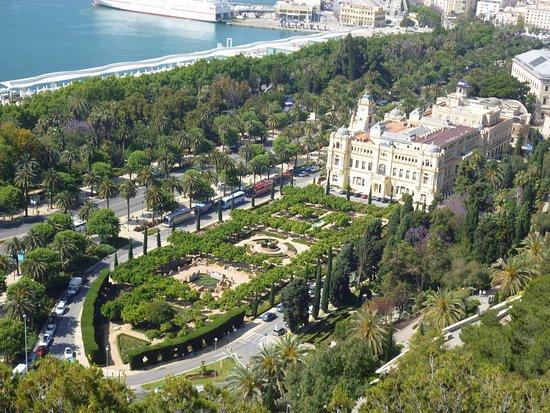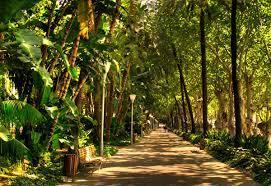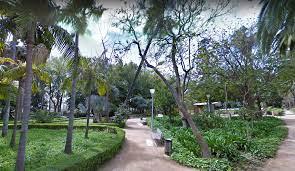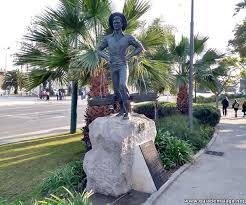




Paseo del Parque-en
The Parque de Málaga or Parque de la Alameda, is a park located in the centre of the city. The design corresponds to a Mediterranean garden with numerous tropical and subtropical species, making it one of the most important public parks in Europe as far as exotic flora is concerned. In this promenade with gardens on both sides, with a Renaissance and baroque character, there are botanical species from all five continents.
![]() Centro histórico
Centro histórico
It was built at the end of the 19th century on land reclaimed from the sea for the expansion of the port in a costly operation.
The park stretches from:
- The Plaza de la Marina, to the west (where we will highlight the famous monument of the cenachero, a fish seller who, in his cenachos, esparto grass and hemp baskets, carries the fresh product of the bay of Malaga, hawking it through the streets of the city; a trade that has now disappeared. The cenachero is, together with the biznaguero or the boquerón, a popular symbol of the city).
- To the Plaza del General Torrijos, where one of the most famous fountains of the city is located, Fuente de las Tres Gracias), located in the Malagueta, where the bullring la Malagueta is located.
It consists of a first line to the north of the road that crosses it, which is flanked by monumental buildings (Palacio de la Aduana, the old Casa del Jardinero Mayor, the old Post Office building, the headquarters of the Bank of Spain and the Town Hall and the Gardens of Pedro Luis Alonso, on its side, above which the Jardines de Puerta Oscura and the Alcazaba overlook.
Opposite this area, next to a children's area, is an iconic element that not only identifies the city, but also allows history to come alive and for us all to be protagonists in it. This is what happens with the Burrito Platero, one of the most beloved (especially by children) and most photographed figures in the city. Several generations have already posed on the back of this sculpture, to such an extent that its upper part appears polished from the rubbing of the canvases of so many who have wanted to immortalise themselves with it. The sculpture, dating from 1968 and made in bronze, is the work of Jaime Fernández Pimentel from Malaga (like the Cenachero). It represents the main character in the book Platero y yo (Platero and I) by Juan Ramón Jiménez.
Such is the importance of this figure for the identity of the city that there is a saying about it that states that whoever does not have a photo mounted on his rump is neither from Malaga nor has visited it.